Analyzing The Legend of Zelda: Ocarina of Time on N64
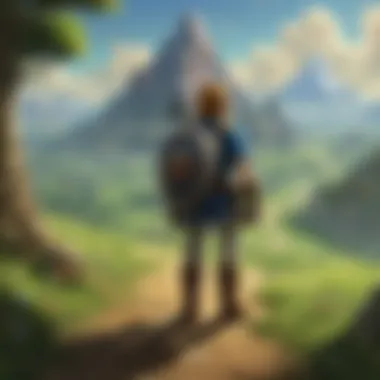
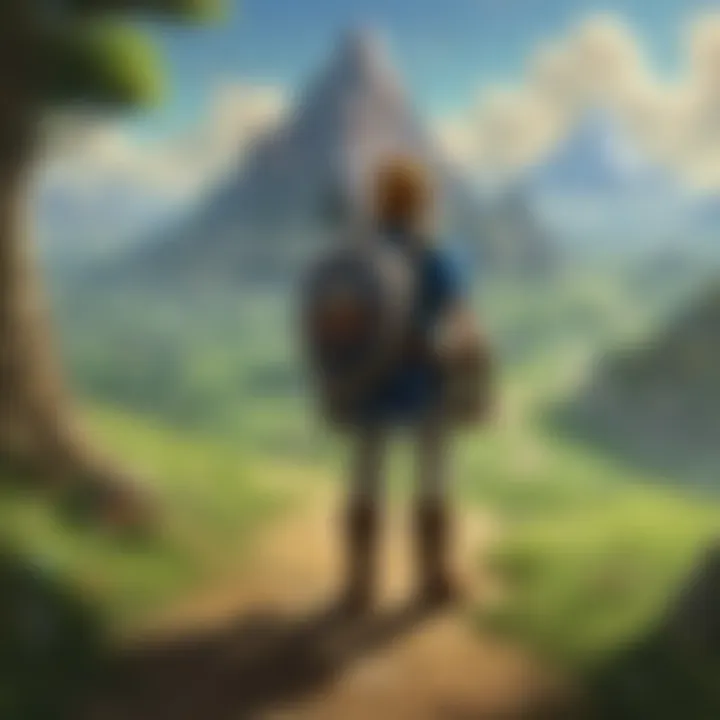
Intro
The world of gaming is filled with remarkable titles, but few shine as brightly as The Legend of Zelda: Ocarina of Time. Released for the Nintendo 64 in 1998, this game stands as a monumental leap in both storytelling and gameplay. The game is not merely a nostalgic relic; it holds significant influence that still reverberates through modern gaming.
With its unparalleled depth, engaging mechanics, and rich lore, Ocarina of Time invites players to immerse themselves in the land of Hyrule. Over the years, it has been lauded for its intricate design and the emotional journeys of its characters. But why does this game continue to resonate with players and critics alike? Here, we will unpack its multifaceted elements, examining what makes this classic endure as a cornerstone of the Zelda franchise and a beacon of gaming history.
Game Reviews
Gameplay Features and Mechanics
In the realm of action-adventure games, Ocarina of Time set the bar sky-high. One of its most revolutionary aspects lies in the introduction of Z-targeting, a method that revolutionized combat and exploration in 3D environments. This feature allowed players to lock onto enemies and objects, giving a greater sense of control that was previously unheard of in its time. Moreover, the mix of real-time combat, puzzle-solving, and exploration led to a well-rounded gameplay experience.
Another novel facet is the use of the ocarina itself. The instrument serves not merely as a plot device but integrates mechanics that connect players with the world. Playing melodies can alter the weather, transport Link to various locations, or influence the actions of characters in Hyrule.
- Example: The Song of Time, learned early in the game, can let players manipulate time for puzzles, showcasing how music intertwines with gameplay rather than feeling tacked on.
Storyline and Quests
The narrative of Ocarina of Time is a timeless tale of good versus evil, framed through Link’s journey to thwart Ganondorf, the dark sorcerer. The story unfolds as Link matures from a young boy in Kokiri Forest to a heroic adult ready to confront an unimaginable threat. This duality in Link's journey marks a significant departure from the formulaic hero's journey that characterized earlier games.
The game is packed with various quests—main quests are complemented by numerous side quests that enrich the lore and character development. The personal stories of characters, like Saria or the Deku Tree, intersect with overarching themes, connecting players more deeply with Hyrule's fate.
Visuals and Sound Design
Graphically, the game was groundbreaking, utilizing vibrant colors and rich environments that brought Hyrule to life. Although limited by the technology of the Nintendo 64, the art style still manages to captivate, striking a balance between whimsy and seriousness. Locations such as the lush Kokiri Forest or the ominous Shadow Temple are etched into the minds of players.
Sound design plays a key role as well; the iconic score composed by Koji Kondo enhances every moment in the game, from the hopeful notes accompanying Link's journey to the haunting melodies echoing in shadowy dungeons.
"The music serves as a subtle reminder of the impending dangers and necessary triumphs, perfectly capturing the game's emotional core."
Comparison with Previous Titles
When juxtaposed with its predecessors, Ocarina of Time introduces advancements that redefine the series. Unlike The Legend of Zelda on the NES or A Link to the Past for the SNES, this title dives into a fully realized 3D world.
- Key differences include:
- The shift from top-down to 3D exploration amplifies the sense of immersion.
- The inclusion of voice acting and cinematic sequences that were not feasible in earlier titles.
- The introduction of deeper RPG elements, such as character development and emotional storytelling.
These shifts not only broadened gameplay but also enriched storytelling, setting a new standard for games to aspire to.
This examination of gameplay features, storyline intricacies, and visual elements sets the stage for a comprehensive analysis of not just what Ocarina of Time is, but why it continues to hold such a significant place in the hearts of gamers across generations.
Prologue to Ocarina of Time
The importance of understanding The Legend of Zelda: Ocarina of Time cannot be overstated when exploring the evolution of video gaming. This title marks a pivotal moment in the history of interactive entertainment, weaving complex narratives with innovative gameplay mechanics. At its core, Ocarina of Time is more than just a game; it embodies a coming-of-age journey through the lens of adventure and discovery. The introduction to this iconic title sets the stage for a broader exploration of its development, gameplay, and cultural resonance in the decades since its release.
Overview of the Game
The Legend of Zelda: Ocarina of Time, released for the Nintendo 64 in 1998, is widely regarded as one of the greatest video games of all time. It represents a significant leap in design, offering players not just a game, but a living, breathing world with its own rich lore. The protagonist, Link, embarks on a quest that is both personal and epic, as he journeys through the land of Hyrule to thwart the evil plans of Ganon. By blending exploration, puzzles, and combat within an expansive 3D environment, the game invites players to immerse themselves in a narrative that resonates on multiple levels. The game’s innovative use of a real-time combat system and a variety of puzzles further enriches the gameplay experience, allowing players to solve problems creatively.
Release Information
The release of Ocarina of Time was set on November 21, 1998, in Japan and followed by North America on November 23, 1998. This two-day gap highlighted the excitement and anticipation building in the gaming community. Upon its launch, the game received widespread acclaim, earning perfect scores from several gaming publications. It pushed technological boundaries of the time, showcasing the capabilities of the Nintendo 64's graphics and sound. Not only did it result in commercial success, but it also influenced countless titles that followed it in the action-adventure genre.
“A leap forward in gaming design and storytelling.”
As the years passed, Ocarina of Time’s significance only heightened, reflected in its re-releases and remasters on platforms ranging from the GameCube to the Nintendo Switch. The ability to reach new audiences while retaining its nostalgic charm speaks volumes about its enduring legacy. It's worth noting that the game received an additional boost in visibility with its inclusion in conversations around gaming culture, frequently referenced in discussions about narrative depth and gameplay innovation.
Development Background
The development background of The Legend of Zelda: Ocarina of Time holds immense significance in understanding the overall impact and intricacies of the game. This section dives into the early visions that sparked its creation, the innovative strides the developers took, and the hurdles they faced, all of which shape our appreciation for what Ocarina of Time accomplished. A closer look at this background not only reveals the thinking behind the mechanics and gameplay but also shows how such a legendary title came together from a blend of creativity, trial, and technology.
Initial Conceptualization
The journey of Ocarina of Time began with a vision that sought to evolve the gaming experience known at the time. Shigeru Miyamoto, the mastermind behind the Zelda franchise, envisioned a higher level of player immersion. He aimed to create a 3D world that wasn't merely meant to be explored, but one that engaged the user in storytelling, puzzles, and combat in a way that hadn't been achieved before in earlier gaming formats. The core idea was simple yet ambitious: to merge the gameplay of the original 2D Zelda titles with the burgeoning possibilities of 3D graphics on the Nintendo 64.
The sheer novelty of a 3D adventure sent ripples throughout the development team. It required a reevaluation of existing game design paradigms and presented the necessity of crafting a comprehensive world that would make full use of the N64's capabilities. This period, rife with brainstorming and conceptual sketches, was foundational, as the team shaped Link's adventures in Hyrule. Early discussions revolved around gameplay mechanics, which sought to keep players engaged with intuitive controls and a sense of freedom that allowed them to explore at their own pace.
Design Innovations
In bringing Ocarina of Time to life, the developers introduced several design innovations that would leave a lasting mark on the entire gaming industry. Key innovations included the targeting system, dubbed "Z-targeting," which allowed Link to lock onto enemies or objects. This was no minor enhancement; it fundamentally changed how players interacted with the environment, providing a new level of precision in combat that many games would emulate in the years that followed.


Moreover, the seamless transition between exploration and combat was groundbreaking. Players could travel through vast landscapes and then transition smoothly into a battle without interruption. This illusion of one steady gameplay experience became a benchmark for future titles.
Furthermore, the game's approach to storytelling was sophisticated for its time. It wove together character development, narrative richness, and environmental storytelling, allowing players to piece together a grand narrative through exploration, interactions, and gameplay. The integration of narrative into gameplay was not something easily accomplished within the confines of the technology at the time.
Technical Limitations and Advances
Developing Ocarina of Time involved tackling various technical limitations that were prevalent during its era. The transition from 2D to 3D gaming wasn't without its challenges. The team had to navigate the constraints of hardware, optimizing graphics to fit within the limited memory and processing power of the Nintendo 64.
One significant hurdle was managing the draw distance in a 3D environment. To present an expansive Hyrule without compromising performance, developers employed various tricks and optimizations. Fog was often used to conceal the limits of the draw distance, a method that many criticized but ultimately gave Hyrule a sense of mystique. The game also relied heavily on clever loading techniques that minimized pauses and loading screens, keeping players engaged in the action.
Additionally, the audio limitations posed challenges for creating a rich soundscape that was integral to gameplay. Yet, the team rose to the occasion, crafting memorable scores that complemented the game’s vast landscapes, adding emotional depth that has echoed through the years.
Navigating these technical constraints ultimately led to advances in game design that shaped later titles, proving that limitations can spark innovation.
"It was within the confines of these limitations that true creativity often flourishes. The team behind Ocarina of Time harnessed their hurdles to craft experiences that would change the landscape of gaming forever."
The developmental background of Ocarina of Time provides critical insights into understanding the game’s successful synthesis of gameplay mechanics, narrative depth, and technological challenges, underscoring its place as a titan in the history of video games.
Gameplay Mechanics
In the realm of video games, gameplay mechanics serve as the backbone that holds the experience together. In The Legend of Zelda: Ocarina of Time, these mechanics create a dynamic interplay between the player and the vast world of Hyrule. Understanding gameplay mechanics reveals how the game not only engages players but also crafts challenges that are both stimulating and rewarding.
Exploration and World Design
Open World Structure
The open world structure is an indispensable feature of Ocarina of Time. This design enables players to traverse through a sprawling landscape filled with varied terrains, from lush forests to arid deserts. It invites exploration and rewards curiosity, which keeps players engrossed.
One key characteristic of this structure is the non-linear progression. Unlike many games of its time that followed a rigid path, players could choose how to engage with the narrative and game objectives. This freedom is engaging as it makes each playthrough feel unique.
A standout feature of this open world is the diverse locations that are intertwined with mythology and interactions, allowing players to encounter side quests and characters that enrich the story. However, the sheer size of the world can be a double-edged sword; some players might feel overwhelmed or lost without clear direction.
Environmental Interactions
Environmental interactions play a significant role in enhancing immersion. Players aren’t just navigating; they’re influencing the world around them. By using tools like bombs or the Hookshot, Link can manipulate his surroundings, unveiling secrets hidden in plain sight.
A notable characteristic of environmental interactions is that they require players to think critically about their use. This encourages a level of engagement that feels organic. Unlike games where the world is merely a backdrop, Ocarina of Time allows players to leave their mark in a tangible way.
One unique aspect of these interactions is the dynamic responses from the environment. For instance, certain actions can change the time of day or trigger weather effects. However, these interactions can occasionally lead to confusion, as not every environmental response is immediately clear to the player.
Puzzle Elements
Logic-Based Challenges
Logic-based challenges in Ocarina of Time are not just random roadblocks; they’re thoughtfully crafted puzzles that enhance the experience and deepen engagement. These challenges often require players to observe their surroundings and make connections that might not be obvious at first glance.
A notable characteristic of these puzzles is their incorporation of storytelling elements, which entwines the narrative with gameplay. Challenges often reflect the mythos of Hyrule, enhancing the player’s connection to the game world.
An interesting feature is their escalating complexity. As players progress, puzzles require increasingly sophisticated logic or combinations of tools, keeping the gameplay fresh. However, some might find certain puzzles a bit cryptic, and frustration can arise when solutions aren’t immediately apparent.
Integration of Music Mechanics
The integration of music mechanics in Ocarina of Time introduces a rhythmic layer to gameplay that is typically unseen in other games. Players utilize the Ocarina, a magical instrument, to solve puzzles, control the environment, and progress through the game.
The key characteristic here is the ability to manipulate real-time events through music, adding a unique twist to the typical puzzle element. This tie between gameplay and music reinforces the immersive experience; each melody has a purpose within the narrative.
One unique feature of these mechanics is how they encourage players to memorize songs for various purposes, from changing the time of day to summoning rain. This is a beneficial approach that adds depth. However, the challenge lies in the complexity of remembering specific tunes, which can be taxing for some players.
Combat System
Weapon Variety and Strategy
The combat system in Ocarina of Time isn’t just about mashing buttons or using the same weapon repeatedly. It encourages players to experiment with a variety of weapons and tactics, providing a rich layer of strategy.
A key characteristic of this system is its adaptability; players can adjust their approach based on enemy types and scenarios. Whether it’s using the Master Sword for melee attacks or the Bow for ranged combat, this variety ensures that combat remains engaging throughout.
A unique feature is the ability to utilize items in combat, forcing players to think on their feet. This can create a thrilling flow of action, but the challenge is balancing inventories and knowing when to switch tactics, which can complicate battles.
Enemy Design and AI Behavior
Enemy design and AI behavior in Ocarina of Time contribute significantly to the game’s challenge and excitement. Each enemy is distinctive, with unique attack patterns that require players to adapt strategies as they encounter different foe.
A notable characteristic is the AI’s ability to change tactics based on a player’s actions. For instance, certain enemies might become more aggressive if they sense weakness, keeping players on their toes. This interaction lends a more dynamic feel to fights.
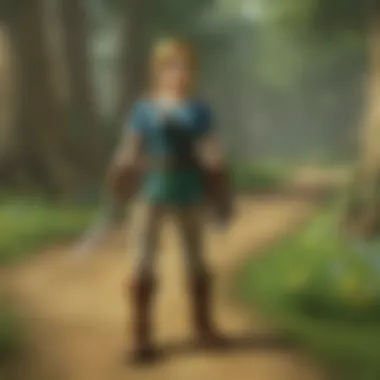
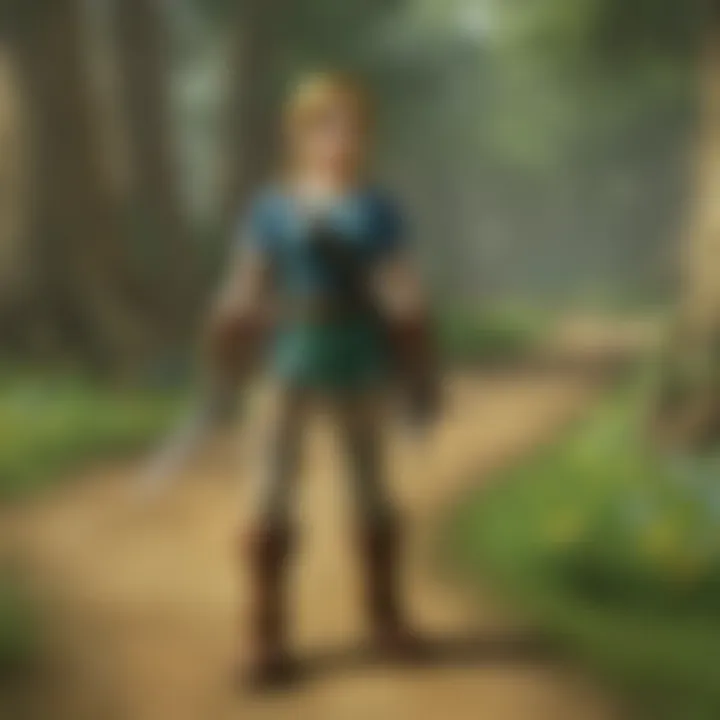
One unique aspect is how enemy design fits within the lore of Hyrule, making each encounter feel meaningful. However, this intricate design can sometimes lead to frustration if players are caught off guard by sudden shifts in enemy behavior.
In summary, gameplay mechanics in The Legend of Zelda: Ocarina of Time are not just functional elements; they are vital to creating a rich and engaging gaming experience.
The careful balance of exploration, puzzle-solving, and combat ensures that players are always challenged while remaining immersed in the captivating world of Hyrule.
Character Analysis
Examining the characters in The Legend of Zelda: Ocarina of Time is crucial to understanding the game's deeper themes and emotional resonance. Characters are not merely vessels for plot progression; they embody values, conflicts, and motivations that enrich the narrative. Each character, from the courageous Link to the wise Zelda and the sinister Ganon, reveals layers of personality that resonate with players on various levels. The protagonist's growth, the development of the supporting cast, and the antagonists’ motives all interweave to create a rich storytelling fabric.
Link: The Protagonist
Link functions as the linchpin of the narrative. The silent hero, often referred to as the 'Hero of Time,' represents courage and determination. Throughout the game, players witness growth in Link, from a young boy in Kokiri Forest to a formidable warrior ready to face evil. His journey encapsulates the essence of coming-of-age tales. Players connect with him not through dialogue but through actions, choices, and the challenges he faces. He serves as a projection of the player's own journey, grappling with fears and stepping into roles greater than himself.
Zelda: More than a Damsel
Princess Zelda is often mistaken for a mere damsel in distress, but her role transcends this stereotype significantly. Zelda epitomizes wisdom and strength. Her alter ego, Sheik, showcases her versatility and combat prowess. Rather than solely existing as a plot device for Link's motivation, she actively contributes to the narrative. This complexity and agency reinforce the importance of her character, making her equally pivotal in the quest to defeat darkness.
Villains of Hyrule
The antagonists within Ocarina of Time aren't just obstacles; they offer critical insight into the game's themes of good versus evil.
Ganon's Role and Motivation
Ganon, as the primary antagonist, is not simply a villain; he brings a dark charisma to the tale. His motivation typically centers around power and domination, opposing Link's quest for peace and justice. What makes Ganon compelling is his cunning nature; he sees Link not just as a fool to be crushed but as a worthy opponent. This dynamic adds depth to the conflict. The sheer determination and ruthless ambition Ganon exhibits create a perfect foil to Link's altruistic aspirations. While some might see it as cliche, many players appreciate this motivation because it reflects a relatable hunger for control and the lengths to which one may go to achieve it.
Key Supporting Antagonists
Supporting villains, like Ganondorf's minions, also play crucial roles. They enrich the narrative by providing diverse challenges that test Link’s abilities. Characters such as Dark Link and the various forms of Ganon throughout the game create memorable confrontations filled with tension and excitement. These supporting antagonists often showcase unique abilities and motivations, which add layers to the overall experience. They make the world feel more populated and dynamic, ensuring that each interaction is filled with stakes.
Link, Zelda, and the villains of Hyrule interact in ways that reflect larger themes in human experience—courage, wisdom, and the persistent battle against darkness. Their roles contribute to the game not just as participants in a story, but as symbols of broader ideas.
"The characters breathe life into the world of Hyrule, creating not just a game, but a narrative that players carry with them long after the credits roll."
Overall, the character analysis in Ocarina of Time provides invaluable insights into what makes the game memorable. Character depth enriches the gameplay experience, drawing players into a story that feels much larger than the sum of its parts.
Narrative Structure
The narrative structure of The Legend of Zelda: Ocarina of Time serves as a backbone to its storytelling, leading players through an intricate web of themes, character arcs, and gameplay mechanics. It's more than mere plot; this structure provides an experience that resonates on multiple levels, drawing players deeper into the world of Hyrule. To understand this significance, we must examine its key elements, which include mythological themes, the hero’s journey, and the implications of time travel.
Mythological Themes
At the heart of Ocarina of Time lies a rich tapestry of mythological themes that guide its narrative. From the struggle between good and evil to the cyclical nature of time, these motifs resonate with universal truths. The game borrows elements from various mythologies, creating a sense of familiarity while also allowing for a unique interpretation.
For instance, the concept of the chosen hero parallels many cultural legends, where an ordinary individual rises to face monumental odds. Link embodies this archetype, but it's not just about his personal growth; it's about fulfilling the destiny written in the very fabric of Hyrule.
In fact, the game evokes the hero's journey, mirroring tales of figures like King Arthur or Perseus. Each character, from the wise sage Rauru to the nurturing Princess Zelda, reinforces these themes, enhancing the emotional impact. Thus, players often find themselves reflecting on their own journeys and struggles, making the game relatable across generations.
The Hero's Journey
Continuing on from the themes, the hero's journey epitomizes the narrative structure of Ocarina of Time. Joseph Campbell’s framework serves as a guiding principle in the game. Link’s adventures follow each stage of this journey: his initial call to adventure, mentorship from characters like Navi and the Great Deku Tree, trials against foes such as Ganon, and ultimately, his return as a hero.
Throughout the narrative, players are immersed in Link’s transformation from a hesitant child in Kokiri Forest to a courageous warrior capable of facing the darkest forces. This evolution aligns perfectly with Campbell’s stages, providing a framework that not only enhances the gameplay experience but also connects players to a deeper storytelling tradition.
Additionally, the emotional stakes involved—such as the loss of a loved one or the struggle against destiny—heighten player engagement. Each sword swing feels significant when accompanied by Link’s growth, making the journey feel personal and profound.
Time Travel and Its Implications
One of the most striking features of the narrative structure in Ocarina of Time is time travel, an innovative plot device that complicates the storyline in intriguing ways. Through the Ocarina of Time, Link is not just exploring new landscapes but also shifting between different timelines. This mechanic challenges traditional concepts of linear storytelling, introducing layers of complexity.
As Link travels seven years into the future, he grapples with the consequences of his actions—making choices that shape his identity and the fate of Hyrule. The concept of changing history prompts players to think critically about their decisions and their repercussions, both in-game and metaphorically in life.
Moreover, characters like Young Zelda and Adult Zelda exemplify the duality of existence across time; they are shaped by past events yet strive toward a better future. The narrative becomes a compelling study of continuity, legacy, and the ripple effects of time, adding intellectual heft to an otherwise straightforward quest.
In summary, the narrative structure of Ocarina of Time offers players not just a story but a multifaceted experience that intertwines mythological elements, the classic hero’s journey, and the complexities of time travel. This careful construction culminates in a rich tapestry that ensures the game's longevity and relevance in the gaming landscape.
Art and Sound Design
Art and sound design hold a vital spot in The Legend of Zelda: Ocarina of Time, establishing a rich atmosphere that immerses players in the world of Hyrule. The visuals and audio work hand-in-hand to create emotional beats and cues that enhance gameplay experiences. This section dissects key elements that contribute to the overall impact of the game, highlighting why they are foundational to both gaming as a medium and to the legacy of the Zelda franchise.
Visual Aesthetic and Style
Character Design

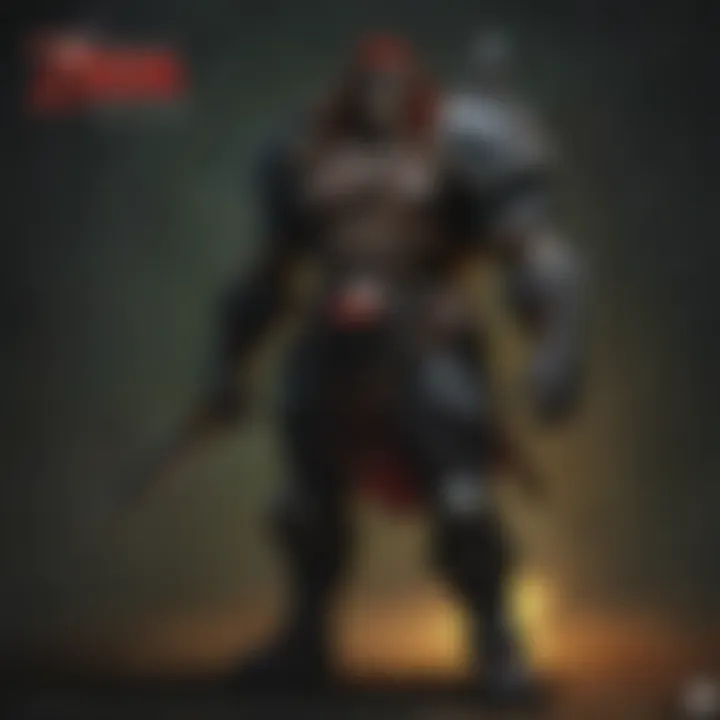
Character design in Ocarina of Time exhibits distinct traits that not only define individual characters but also enhance the narrative. The two-dimensional sprites of prior Zelda titles evolved into three-dimensional models with unique animations and shapes that stand out in the game environment. This transition grants characters a gentle depth, allowing players to relate to Link, Zelda, and others on a personal level.
One significant aspect is the iconic look of Link himself, characterized by his green tunic and pointed hat. This simple yet effective design has become synonymous with heroism. The choice to keep Link's design minimal yet instantly recognizable serves to symbolize the archetype of the hero.
The limitations of N64 hardware led to stylized designs that translated well into 3D. Characters may not possess ultra-realistic textures, but their exaggerated features provide clarity and appeal. Unique design elements make it easy to differentiate even among various supporting characters, conveying their personality effectively without the need for lengthy exposition.
Environmental Art and Atmosphere
The environmental art in Ocarina of Time is noteworthy for its lush landscapes and diverse settings—from the idyllic Kokiri Forest to the haunting depths of the Shadow Temple. Each area has its own visual flavor, contributing to the world’s immersion.
One key characteristic is the use of vibrant colors and well-crafted scenery that invites exploration. This visual language draws players into Hyrule, making it feel alive. For instance, the warm tones of Hyrule Field contrast sharply with the cool, shadowy designs of the Gerudo Valley, establishing a vivid emotional backdrop.
Moreover, environmental interactions, such as the changing weather or day-night cycle, further enrich the atmosphere. Despite the limitations of polygon counts, designers created a sense of depth that encourages players to engage with their surroundings. The visuals manage to meld nostalgia and curiosity, crafting an unforgettable experience.
Musical Composition
Memorable Themes
The music of Ocarina of Time remains deeply entrenched in gaming history, primarily due to its go-to melodies that resonate long after the game is played. The main theme, evoking a sense of adventure, captures the essence of Hyrule and has been arranged and performed by fans worldwide.
One specific highlight is the use of the ocarina itself as more than just a quest item. Each song has a purpose, often triggering significant events or changes in the environment. This unique interactivity makes the themes not just catchy tunes but integral components of gameplay. The simplicity of the melodies promotes their memorability, ensuring that players associate certain pieces with specific moments.
Impact of Music on Gameplay
The positive impact of music on gameplay cannot be understated. In Ocarina of Time, sound design complements game mechanics through audio cues that signal changes or foreshadow other occurrences. For instance, the shift from serene melodies to ominous tones can alert players to an approaching danger or puzzle element that requires attention.
One of the audio hallmarks is the pairing of ambient sounds with musical themes, creating a cohesive experience. Walking through a serene meadow, one could hear the gentle flow of a stream gleefully complemented by breezy flute notes. This blend underscores the game's emotional layers, which heightens immersion.
"The music does not merely accompany the game; it actively engages players, urging them to pay attention to their surroundings and react accordingly."
Overall, both art and sound design are critical in shaping the legacy of Ocarina of Time. The aesthetic richness and memorable soundtrack leave an indelible mark on players, ensuring that even years later, the game retains its allure. It intertwines players with the fabric of Hyrule, solidifying its position as a touchstone in gaming.
Cultural Impact
The cultural impact of The Legend of Zelda: Ocarina of Time extends far beyond its initial release. This masterpiece shifted the landscape of video gaming, leaving an indelible mark not just on players but also on the industry as a whole. To understand its significance, it's crucial to analyze its influence on various aspects of gaming and popular culture.
Influence on Gaming Genre
When it debuted in 1998, Ocarina of Time was groundbreaking in its approach to open-world game design. It seamlessly integrated exploratory freedom with a structured narrative, setting a precedent for future titles. The game's 3D graphics and locking mechanics during combat were revolutionary, proposing a new standard for action-adventure games. It's not stretching the truth to say that games like Dark Souls and Breath of the Wild owe part of their existence to this early innovation.
Moreover, the time-travel mechanic utilized in Ocarina of Time paved the way for complex storytelling within games. Players had to navigate through time, impacting their world and experiences in ways that had not been explored before. This layered narrative approach has since become a staple in many games, captivating audiences who appreciate depth and interactivity.
Legacy Within the Zelda Series
Ocarina of Time holds a pivotal place in the Zelda franchise. As the first 3D installment, it redefined what fans could expect from future entries. Following its success, Majora's Mask, released in 2000, built upon the gameplay framework established by Ocarina while simultaneously shifting the tone and focus towards darker themes and a more intense connection to time management.
Zelda titles that came after, like The Wind Waker and Twilight Princess, incorporated elements of Ocarina's design philosophy. The series continued to explore a balance between intricate dungeon design, storytelling, and player agency. Each new installment carries echoes of its predecessor, with fans frequently drawing parallels to Ocarina’s mechanics and narrative depth.
Receptions and Critiques Over Time
When Ocarina of Time first launched, it was met with widespread acclaim, earning perfect scores across various gaming publications. Critics praised its design, storytelling, and music. As gaming analysts often note, the sentiment hasn’t faded; it consistently features at the top of greatest game of all time lists two decades later.
However, that’s not to say the game is flawless. Some critiques have emerged over the years, particularly around its pacing and certain dated mechanics. For example, the necessity to collect various items to progress could be perceived as cumbersome by modern standards. Yet these criticisms enhance the conversation surrounding its legacy, providing context for how gaming has evolved since its release.
As time goes on, Ocarina of Time serves as a reference point for discussions about narrative depth, character development, and gameplay design. It is not simply a game but a cultural artifact that showcases the evolution of interactive storytelling and game mechanics.
"The legacy of Ocarina of Time is not confined to its nostalgia; it's the foundational block for countless titles that followed, and its influence is still felt today."
Understanding the cultural impact of Ocarina of Time highlights more than just its sales figures—it's about how it altered the very fabric of gaming. From inspiring new genres to enriching the lore of the Zelda series, its significance is multifaceted, making this game a timeless classic that continues to resonate with fans old and new.
Epilogue
The conclusion of this article serves as a critical junction, reflecting on the myriad experiences delivered through The Legend of Zelda: Ocarina of Time. This game is often characterized not just as a title but as an experience that has woven itself into the fabric of gaming culture. Its enduring appeal lies not only in nostalgia but also in its innovative mechanics, storytelling, and the emotional resonance it presents to players.
Enduring Appeal of Ocarina of Time
The fascination with Ocarina of Time endures because it encapsulates a unique blend of adventure, time travel, and personal growth. It transformed the experience of gaming into a meaningful journey, allowing players to step into the shoes of Link, a hero who battles not only physical foes but also the trials of time itself. The game stands tall with these key points of appeal:
- Narrative Depth: The story arc of a young boy who evolves into a hero resonates across generations. Players find themselves not merely playing a role but investing emotionally in Link's triumphs and struggles.
- Pioneering Gameplay: At its release, the innovative use of 3D graphics and real-time combat offered a slice of adventure that was uncommon for its time. The various puzzles and environmental interactions keep players engaged and continuously challenge them.
- Rich Soundtrack: The melodies players discover, especially songs executed using the Ocarina itself, create memorable moments that blend seamlessly with exploration and combat. These tunes have become iconic, echoing through not just this game but the franchise as a whole.
Ultimately, the profound connections that players forge with its characters, coupled with its groundbreaking mechanics, ensure that Ocarina of Time remains a relevant touchstone in the world of video games.
Final Thoughts on Its Place in Gaming History
Reflecting on its legacy, Ocarina of Time holds a prestigious spot in gaming history that no one can easily overlook. It set the bar high for future titles within the action-adventure genre and established a template that many games would aspire to.
Consider these significant aspects:
- Cultural Impact: The game influenced countless titles that followed, embedding principles of exploration, storytelling, and character development deep within the industry's standards.
- Critical Acclaim: With numerous awards and high rankings in retrospective lists, its acclaim over the years reflects its quality and importance. Affectionately referred to as one of the greatest games of all time, it continues to spark discussion and analysis among both fans and scholars.
- Community and Evolution: The vibrant fan communities that have formed around the game bolster its longevity. From fan art to theories regarding the lore, this engagement showcases an ongoing appreciation and dialogue around Ocarina of Time, which still resonates with a new generation.







